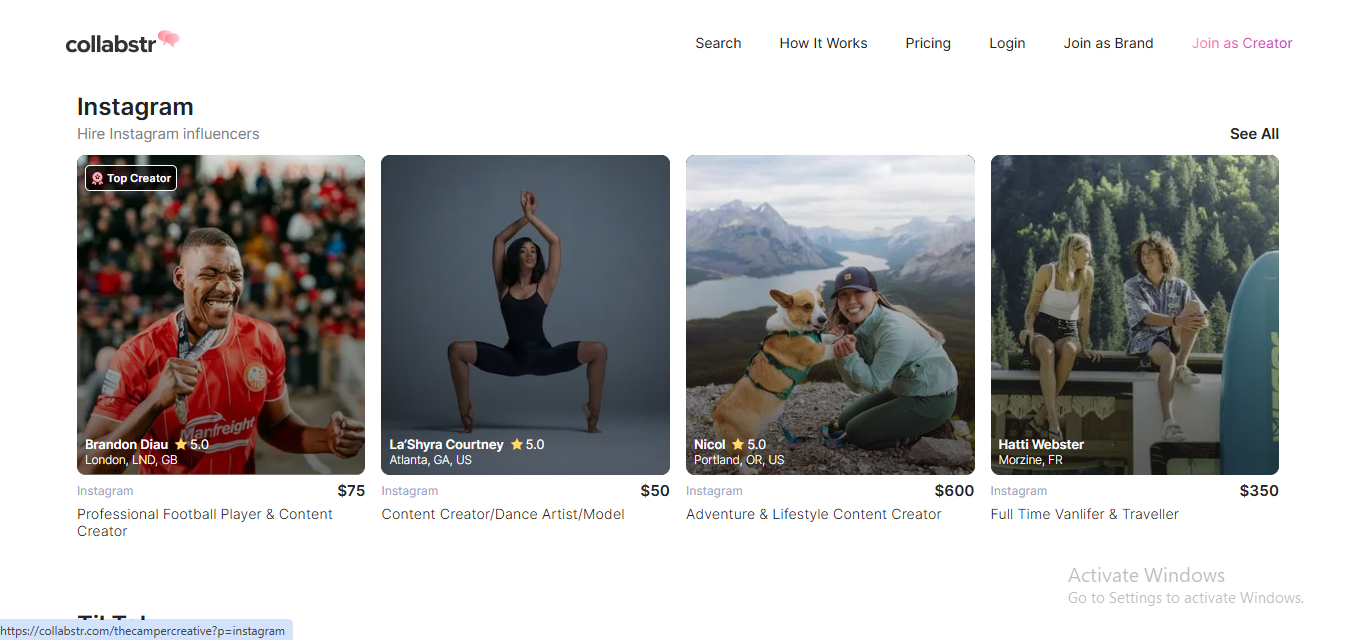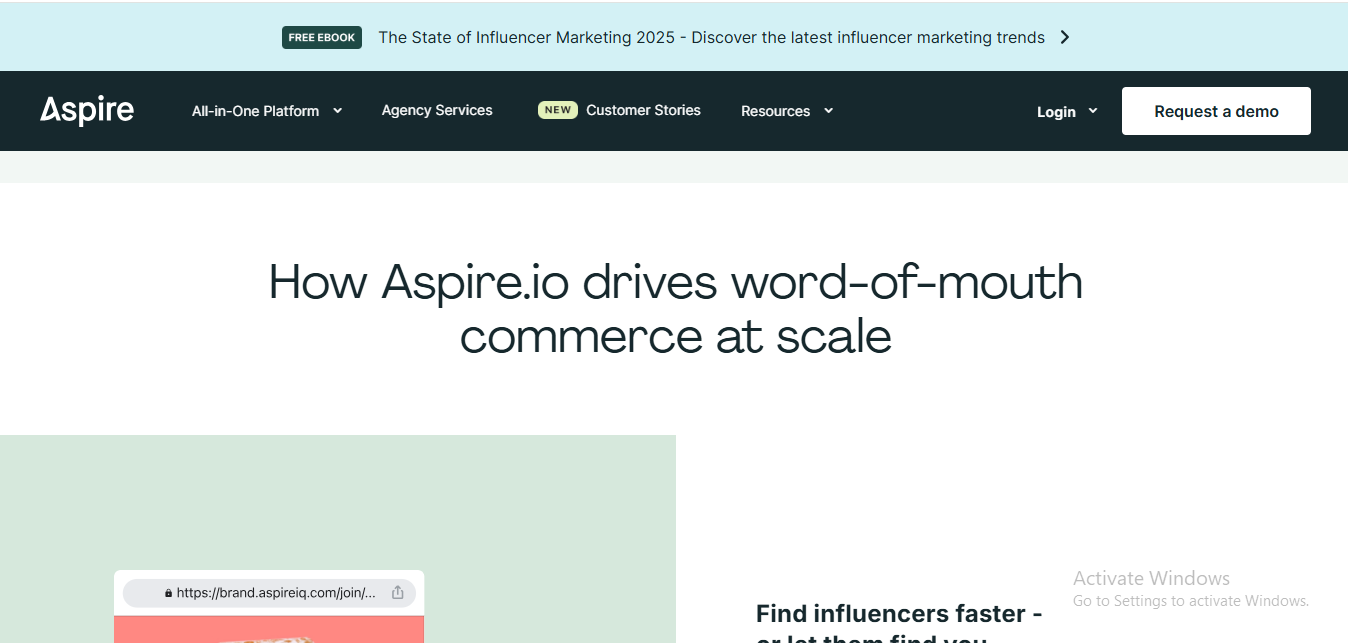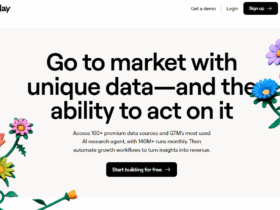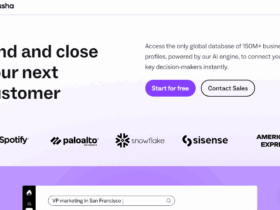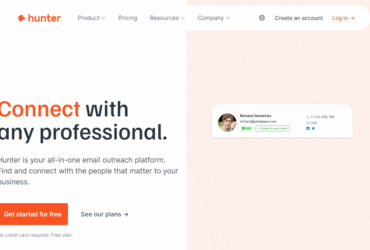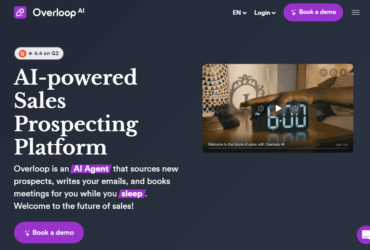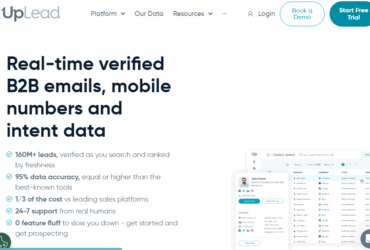Alright, folks, we’re diving into the world of influencer marketing today. Whether you’re an influencer hunting for a platform to make the big bucks or a brand trying to find the perfect match for your campaigns, I’ve got you covered. I’m here to break down the 29 best Traackr alternatives for 2025. I’ll give you the lowdown on how each platform stacks up, the features that made me go “wow,” and the ones that made me go “meh.” Let’s get into it!
Mavrck

Mavrck is like the cool kid in school—powerful, with a big reputation. It’s an influencer marketing platform with a TON of capabilities. Mavrck helps brands build long-term relationships with influencers, offering an easy-to-use dashboard that lets you manage everything from campaigns to ROI analysis.
What I Loved:
-
Influencer Engagement: This platform isn’t just about influencer discovery—it focuses on ongoing relationships. You can easily identify influencers and nurture those connections.
-
Analytics: The data here is on point. You get real-time reports and advanced analytics that help you optimize your campaigns and see what’s really working.
What I Didn’t Love:
-
Pricing: Not exactly pocket change, especially for smaller brands. The features are amazing, but it can feel a bit like you’re paying for a full-on marketing department.
-
Learning Curve: Some users might need a bit of time to get used to all the advanced features, but hey, it’s worth the learning curve if you have the time.
Pricing: $$$
If you’ve got a budget for it, Mavrck is top-tier.
The Influencer Room
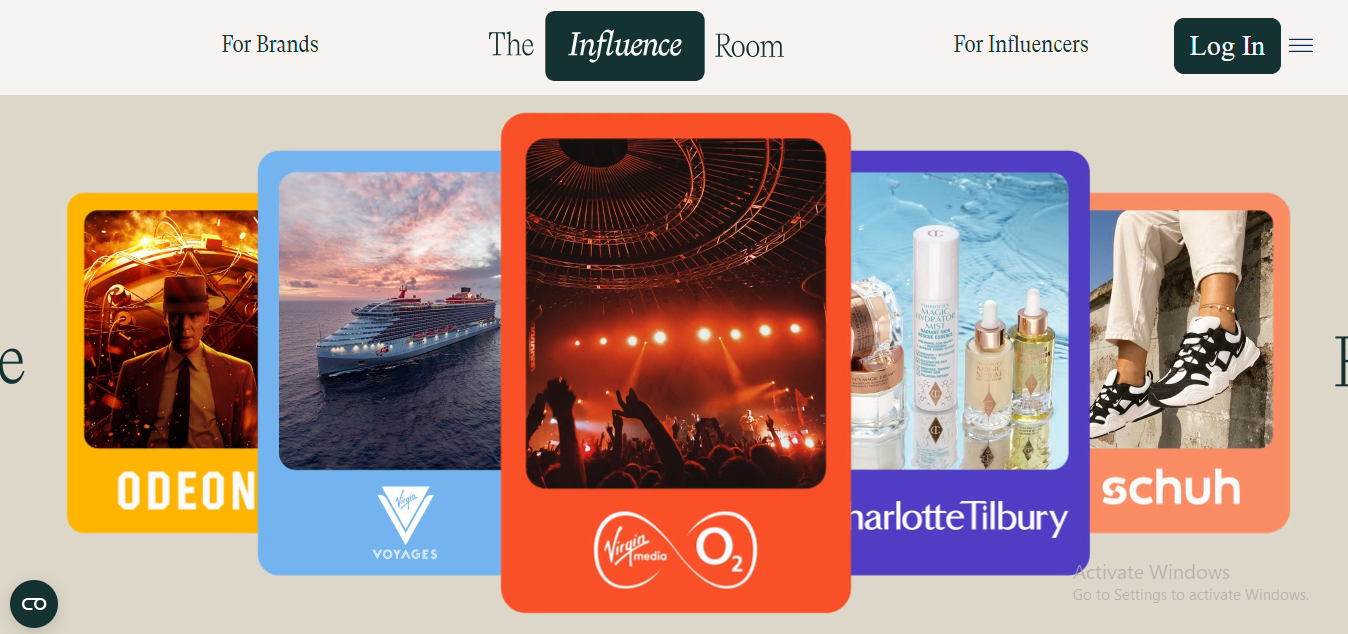
This one’s a bit like your reliable bestie who always has your back. The Influencer Room is super streamlined and makes managing influencer campaigns a breeze. It’s more niche, catering mainly to micro and nano influencers.
What I Loved:
-
Ease of Use: The platform is so intuitive. You won’t need to waste time figuring out how to navigate it.
-
Micro-Influencer Focus: If you’re a brand looking to work with smaller influencers, this platform is perfect for you. It’s all about authenticity and building community.
What I Didn’t Love:
-
Limited Features for Big Brands: Larger brands might find this platform a bit too focused on micro-influencers and not powerful enough for big campaigns.
-
No Customization: The templates are nice, but I would’ve liked to see a little more room for customization.
Pricing: $$
Pretty affordable if you’re starting out, but you might hit the ceiling if you need something more robust.
Grin
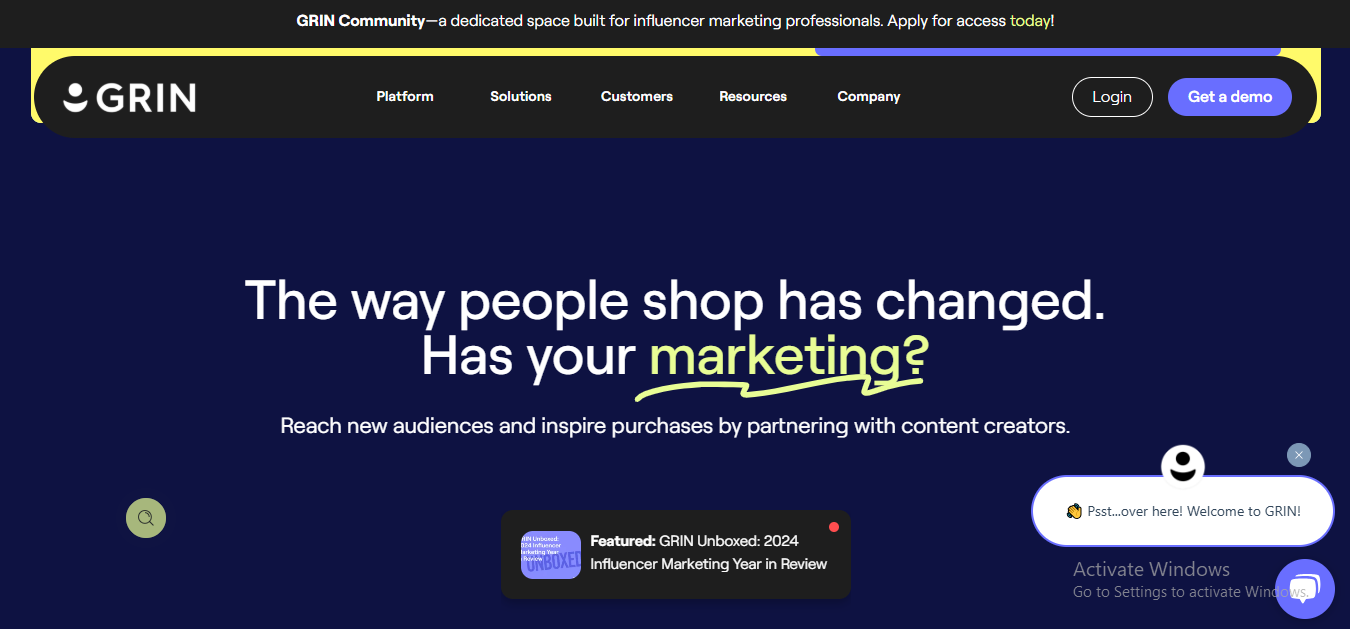
Grin is like the Swiss Army knife of influencer marketing platforms. It’s packed with features that let you find, manage, and analyze influencer relationships all in one place. Plus, it integrates with most eCommerce platforms, which is a game-changer if you sell online.
What I Loved:
-
Ecommerce Integration: If you’re running an online store, Grin connects seamlessly with Shopify and other e-commerce tools, making tracking sales from influencer posts easy.
-
Content Approval: You get a super smooth approval process for content, making collaboration with influencers hassle-free.
What I Didn’t Love:
-
Onboarding: It can take a while to get everything set up, especially if you’re not super tech-savvy.
-
Pricey: Again, like Mavrck, this one is aimed at larger brands, so the cost can be a bit much for smaller businesses.
Pricing: $$$$
Grin’s premium features come with a price, but if you’ve got the budget, it’s a beast.
Influencity
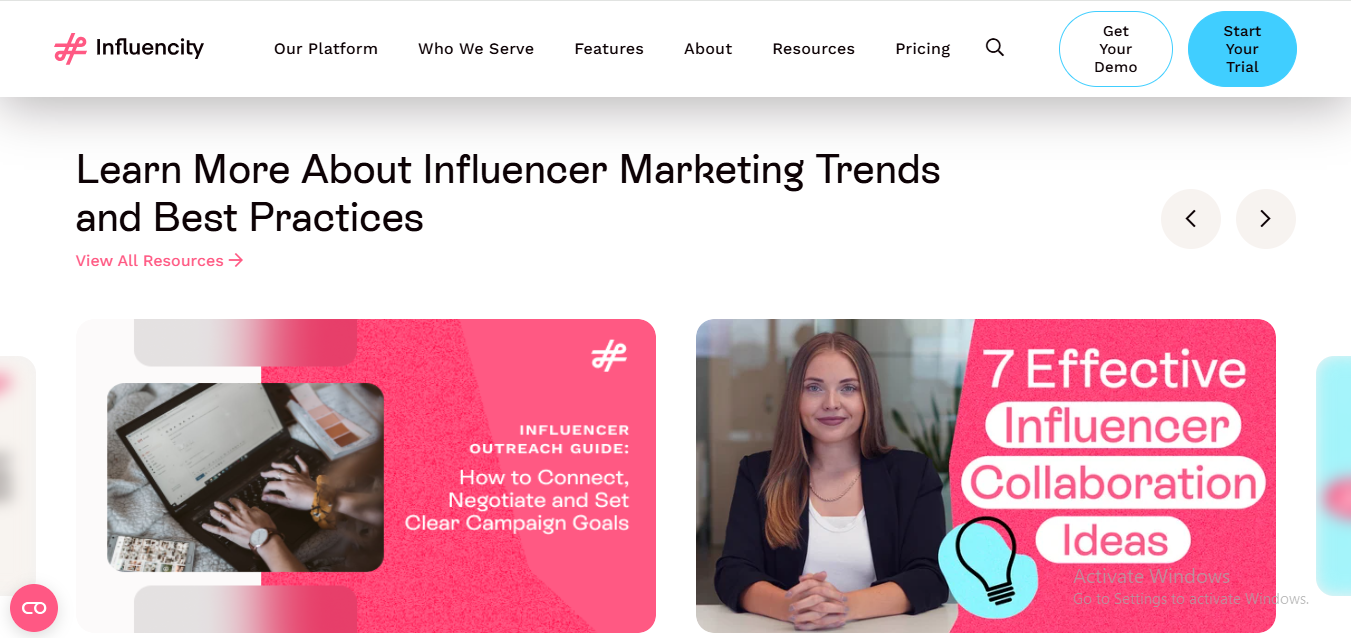
Influencity is another solid option in the influencer marketing space, offering a wide range of features for influencer discovery, campaign tracking, and analytics. Think of it as a smart assistant that makes influencer marketing super efficient.
What I Loved:
-
Influencer Search Filters: It has an amazing search engine for finding influencers that match your brand perfectly. You can filter by location, engagement rate, and a bunch of other factors.
-
Analytics Dashboard: The reporting tools here are killer. You get insights that really help you fine-tune your campaigns.
What I Didn’t Love:
-
Basic Design: It’s functional, but I think the interface could use a little sprucing up. It’s a little clunky in comparison to other platforms.
-
Learning Curve: There’s a lot of features, and while they’re awesome, it can be a lot to take in at first.
Pricing: $$$
Good for mid-sized brands, but it may be too much for startups unless you’re diving deep into influencer marketing.
Hashtag Paid
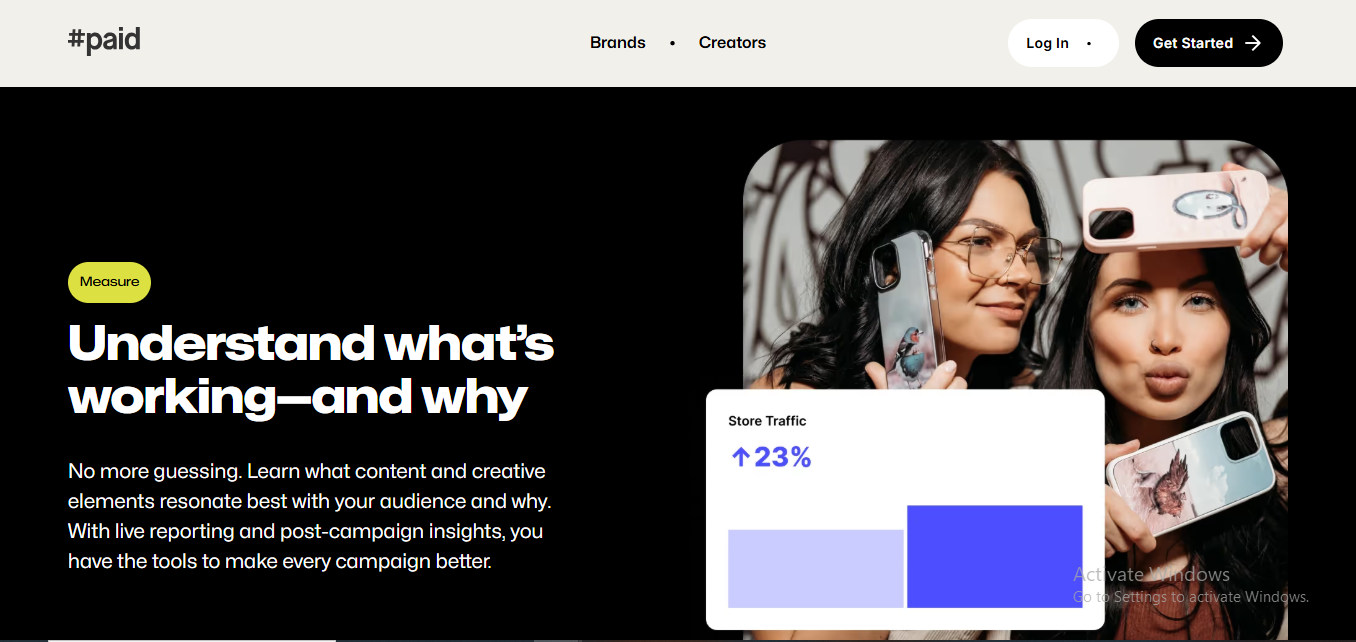
Hashtag Paid takes the guesswork out of influencer marketing by focusing on paid campaigns. If you’re looking to throw cash at influencers to get some serious exposure, this platform is your jam. It matches brands with top-tier influencers ready to promote your products for a fee.
What I Loved:
-
Clear Pricing Models: No hidden fees here. You pay for what you get, which makes budgeting easy.
-
High-Quality Influencers: The influencers on this platform are top-notch, which is perfect if you need big names for your campaign.
What I Didn’t Love:
-
Limited to Paid Campaigns: If you’re looking for a platform to manage organic collaborations as well, this might not be the one for you. It’s mostly focused on paid partnerships.
-
Smaller Influencer Pool: The platform is more suited to big names, so if you’re looking for micro-influencers, you might want to look elsewhere.
Pricing: $$$$
Expect to pay for premium influencers, but the results could be worth it.
Lolly
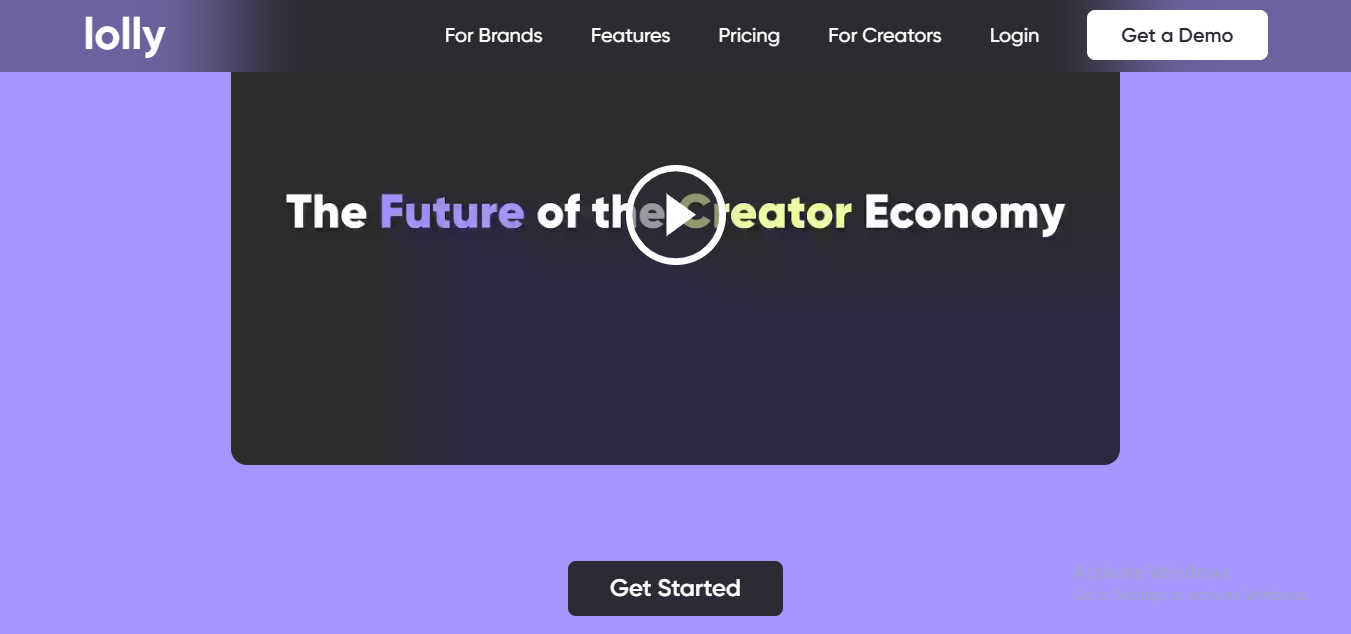
Lolly has a fun vibe and is all about giving influencers the tools they need to manage their partnerships. If you’re a brand looking for an easy-to-use influencer marketing platform, Lolly’s got your back. It’s got a great blend of automation and personal touch.
What I Loved:
-
Influencer Communication: It makes chatting with influencers super easy. The messaging system feels more like a social media platform, so it’s not all formal and stiff.
-
Campaign Automation: You can automate most of your campaign management, saving you a ton of time.
What I Didn’t Love:
-
Lack of Analytics: I would’ve liked to see more robust analytics to track the success of campaigns.
-
Limited Customization: The campaign setup feels a little rigid. You can’t tweak things as much as I’d like.
Pricing: $$
Great if you’re a brand on a budget but still need some powerful tools for influencer management.
The Cirqle
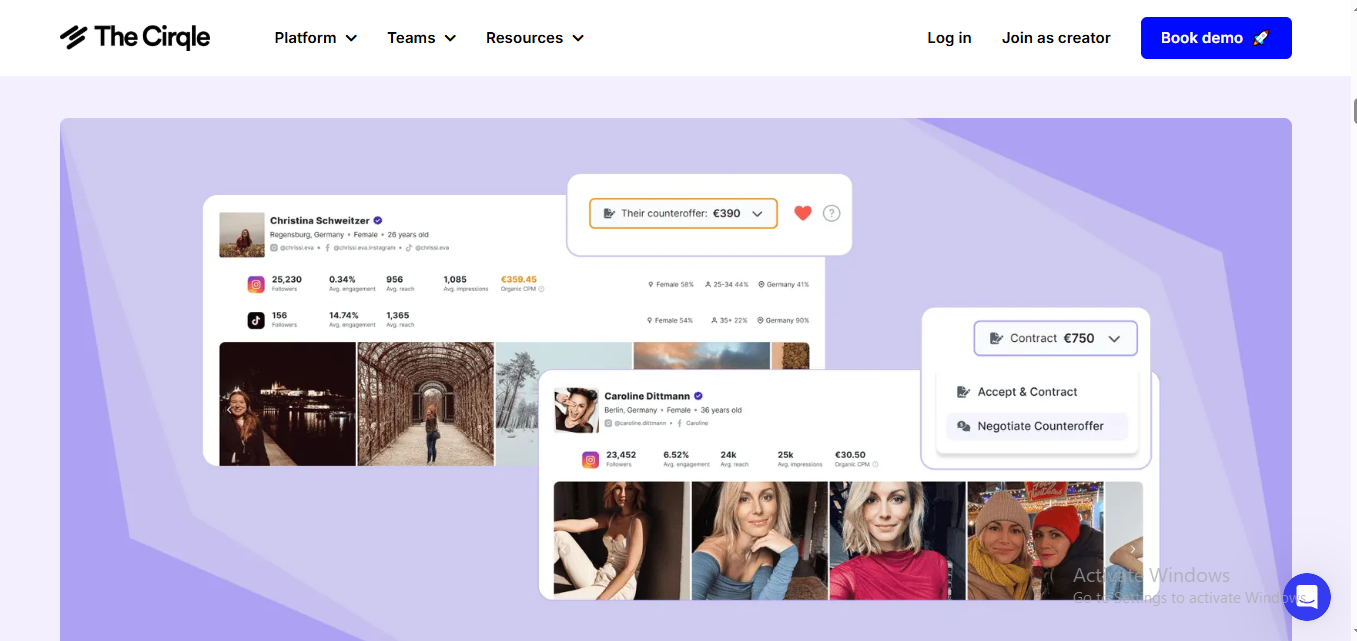
The Vibe:
This one’s slick. Think James Bond meets marketing software. Everything looks polished, and it works like a charm.
What I Loved:
-
AI-Powered Matching: The Cirqle’s algo is scary good. I just plugged in my brand deets, and boom—it spit out a list of influencers that actually made sense.
-
Global Reach: It’s not just stuck on the U.S. map. If you’re running international campaigns, this is 🔥.
What I Didn’t Love:
-
Kinda Pricey: Yeah, it’s geared towards enterprises, so small brands might find it a lil heavy on the wallet.
-
Overkill for Smaller Projects: If you’re just running a small launch or one-off collab, it’s like bringing a bazooka to a water balloon fight.
Pricing: $$$$
Big brand energy (and big brand prices).
Popular Pays
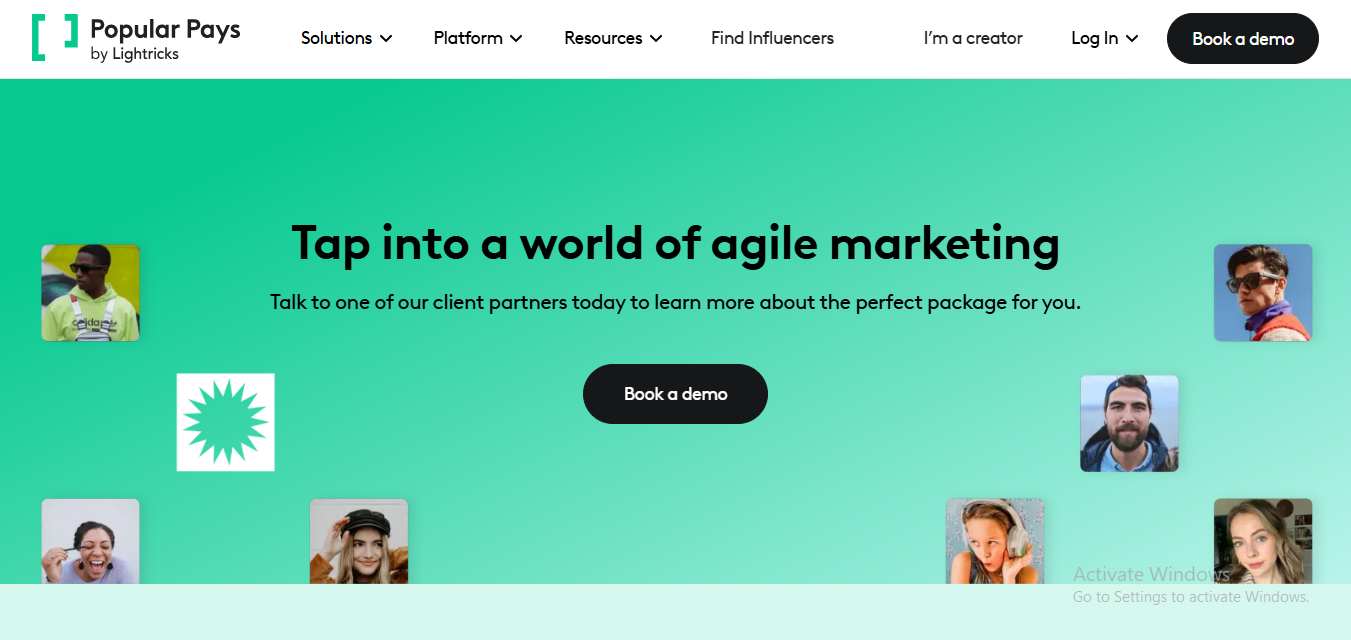
The Vibe:
Popular Pays is like that cool indie band that suddenly made it big—clean, edgy, and surprisingly user-friendly.
What I Loved:
-
Visual-First Workflow: It’s tailored for creatives. Everything feels Instagram-native, if that makes sense.
-
UGC + Collabs: You’re not just working with influencers. You can source dope content from everyday creators too.
What I Didn’t Love:
-
Limited Niche Influencers: If you’re working in hyper-niche industries (like eco-minimalism or pet psychics?), the pool’s a bit shallow.
-
Clunky Search Tool: The search UI could use a glow-up—it feels like 2017 called and wants its dropdown menus back.
Pricing: $$$
Solid mid-tier pricing. Not cheap, not stupid expensive.
Collabstr
The Vibe:
This one is super Gen Z-core. Think TikTok meets Fiverr. You scroll, click, and BOOM—collab secured.
What I Loved:
-
No Fluff, Just Deals: You find an influencer, check their price, pay, and the campaign starts. Super transactional in the best way.
-
Great for Small Biz: If you’re running a side hustle, Etsy store, or indie skincare brand—this platform is your BFF.
What I Didn’t Love:
-
Basic AF Features: It’s kinda like dating with no bios—limited info, no deep insights.
-
Manual Tracking: You’ll be doing more backend legwork if you’re managing bigger campaigns.
Pricing: $
Budget-friendly and great for first-timers or solo-preneurs.
Kolsquare

The Vibe:
Kolsquare is like the European cousin of Traackr. Fancy, detailed, and a little mysterious if you don’t read French 😅
What I Loved:
-
Deep Data on Influencers: Engagement rates, audience insights, brand safety—you get all the receipts.
-
Great B2B Focus: Perfect if you’re an agency juggling multiple clients.
What I Didn’t Love:
-
Can Feel Stiff: The UI is very “corporate chic,” which might not vibe with younger, hipper brands.
-
Customer Support Lag: I had a few Qs and it took a hot minute to get answers.
Pricing: $$$
It’s tailored for agencies and pro marketers, so yeah—it’s on the steeper side.
Captiv8
The Vibe:
Captiv8 is that flashy tech bro who also reads poetry—packed with AI, but still vibes with your inner storyteller.
What I Loved:
-
AI Smart Matching: This thing practically builds your influencer brief for you. The predictive modeling is freakishly good.
-
Campaign Tracking Dashboard: Real-time, baby. You see clicks, conversions, and even emojis used in captions
What I Didn’t Love:
-
Info Overload: If you hate dashboards with 47 tabs, prepare yourself. It’s a LOT.
-
Upfront Time Investment: Setting up your first campaign takes longer than a Netflix binge.
Pricing: $$$$
A Cadillac of platforms, and you’re definitely paying premium.
Aspire (formerly AspireIQ)
The Vibe:
Aspire is like Pinterest on steroids—super aesthetic, very DIY-friendly, and loved by DTC brands everywhere.
What I Loved:
-
Creator Marketplace: You post a campaign and influencers apply. Reverse engineering at its finest.
-
CRM for Influencers: It treats influencers like long-term partners, not one-night stands. Chef’s kiss 💋
What I Didn’t Love:
-
Inconsistent Applications: Sometimes you get 100 responses, sometimes 2. Feels like dating apps tbh.
-
Clunky Onboarding for Brands: Not hard, just a little more complex than necessary for newbies.
Pricing: $$$
A fave for ecomm brands. Not cheap, but def worth it if you’re scaling.
TRIBE
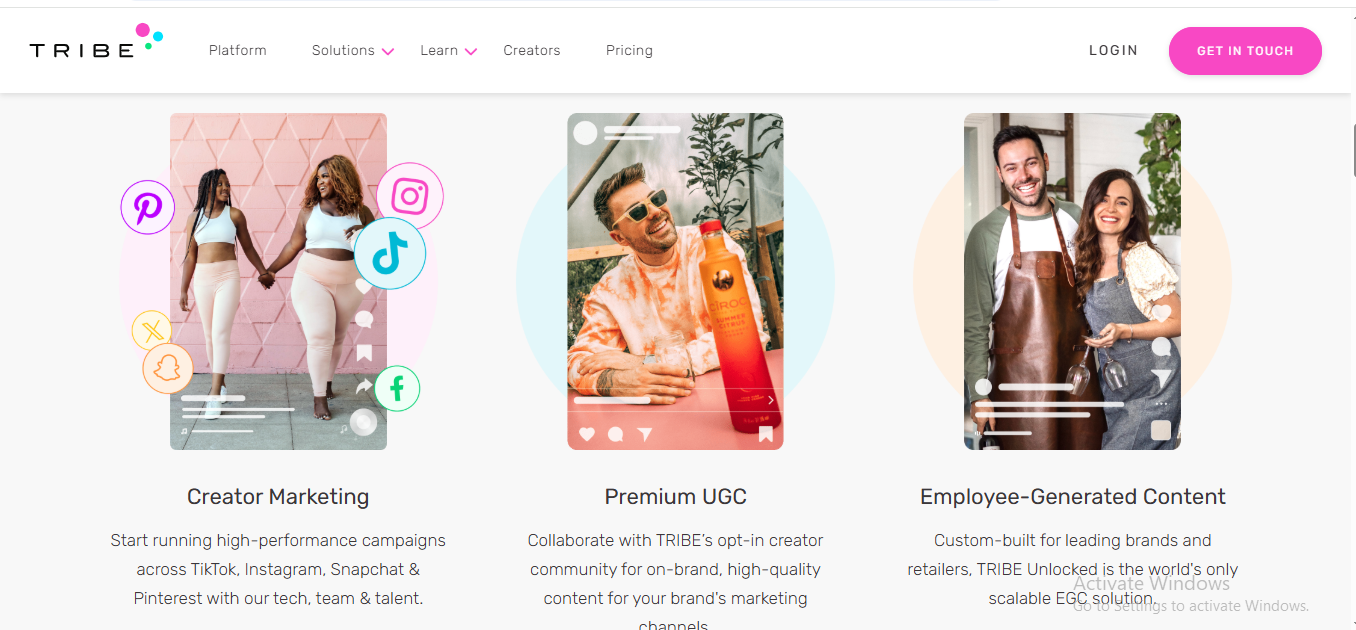
What I Loved:
-
User-Friendly Interface: TRIBE’s platform is intuitive, making campaign setup a breeze.
-
Authentic Content: The focus on user-generated content ensures genuine engagement.
-
Direct Collaboration: Brands can connect directly with creators, fostering real relationships.
What I Didn’t Love:
-
Limited Analytics: While basic metrics are available, deeper analytics would be beneficial.
-
Pricing Transparency: More upfront information on pricing tiers would be helpful.
Pricing: TRIBE offers a pay-per-post model, allowing flexibility based on campaign needs.
Braze
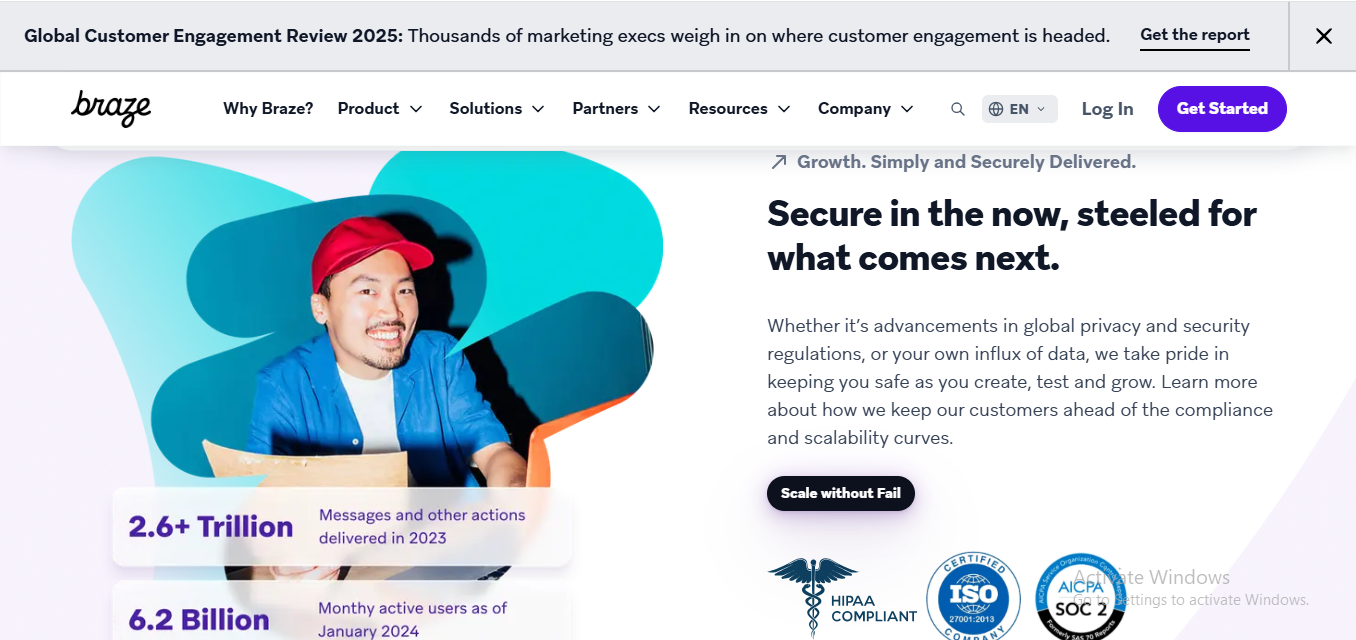
What I Loved:
-
Comprehensive Engagement: Braze excels in multi-channel customer engagement, integrating email, push notifications, and more.
-
Personalization: Advanced segmentation allows for tailored messaging to different audience segments.
-
Real-Time Data: Access to real-time analytics helps in making informed decisions quickly.
What I Didn’t Love:
-
Complex Setup: The platform can be overwhelming for newcomers due to its extensive features.
-
Cost: Pricing can be on the higher side, which might not be ideal for smaller businesses.
Pricing: Braze offers customized pricing based on business needs and scale.
IZEA
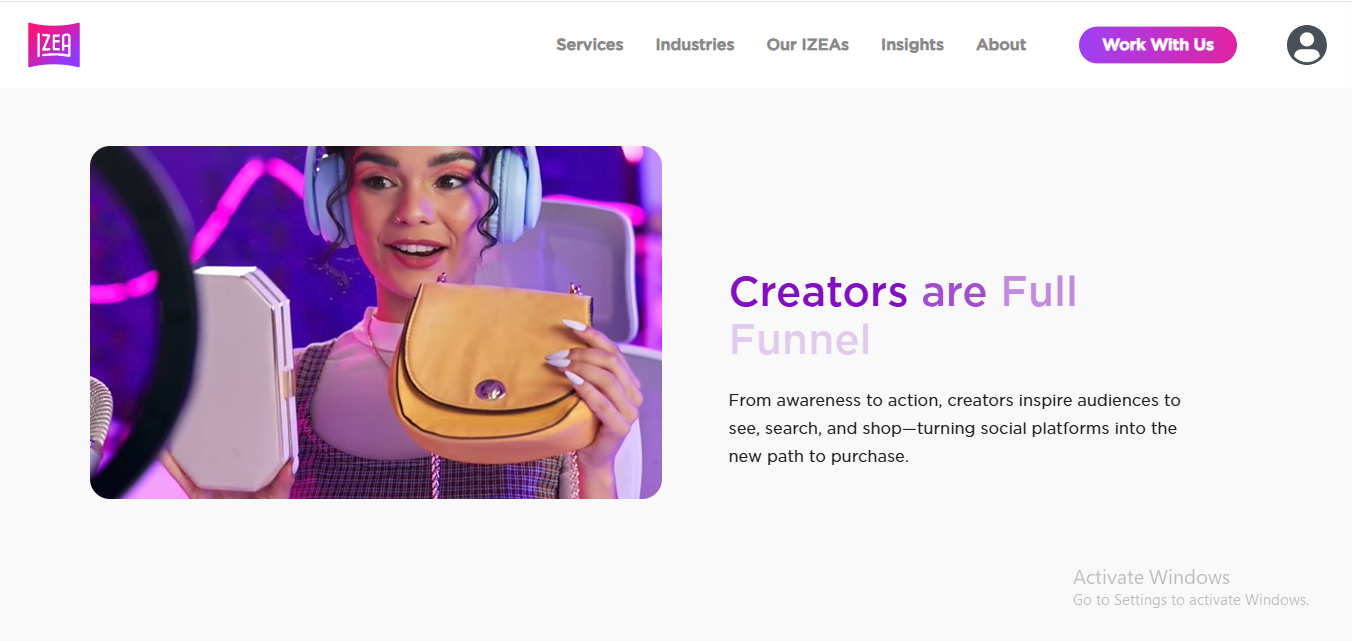
What I Loved:
-
Diverse Marketplace: A vast network of creators across various niches.
-
Campaign Management: Tools for managing campaigns from start to finish streamline the process.
-
Content Licensing: Easy licensing options for repurposing content.
What I Didn’t Love:
-
Interface: The user interface could use a modern refresh for better usability.
-
Response Time: Some users report slower response times from support.
Pricing: IZEA provides both self-service and managed services, with pricing varying accordingly.
Insense

What I Loved:
-
UGC Focus: Emphasis on user-generated content resonates well with today’s audiences.
-
Creative Briefs: Streamlined process for brands to communicate their vision to creators.
-
Direct Chat: Facilitates real-time communication between brands and influencers.
What I Didn’t Love:
-
Limited Integrations: Expanding integrations with other platforms would enhance usability.
-
Learning Curve: New users might need time to familiarize themselves with all features.
Pricing: Insense offers flexible pricing, starting at $50 per video, catering to various budget levels.
Influence.co
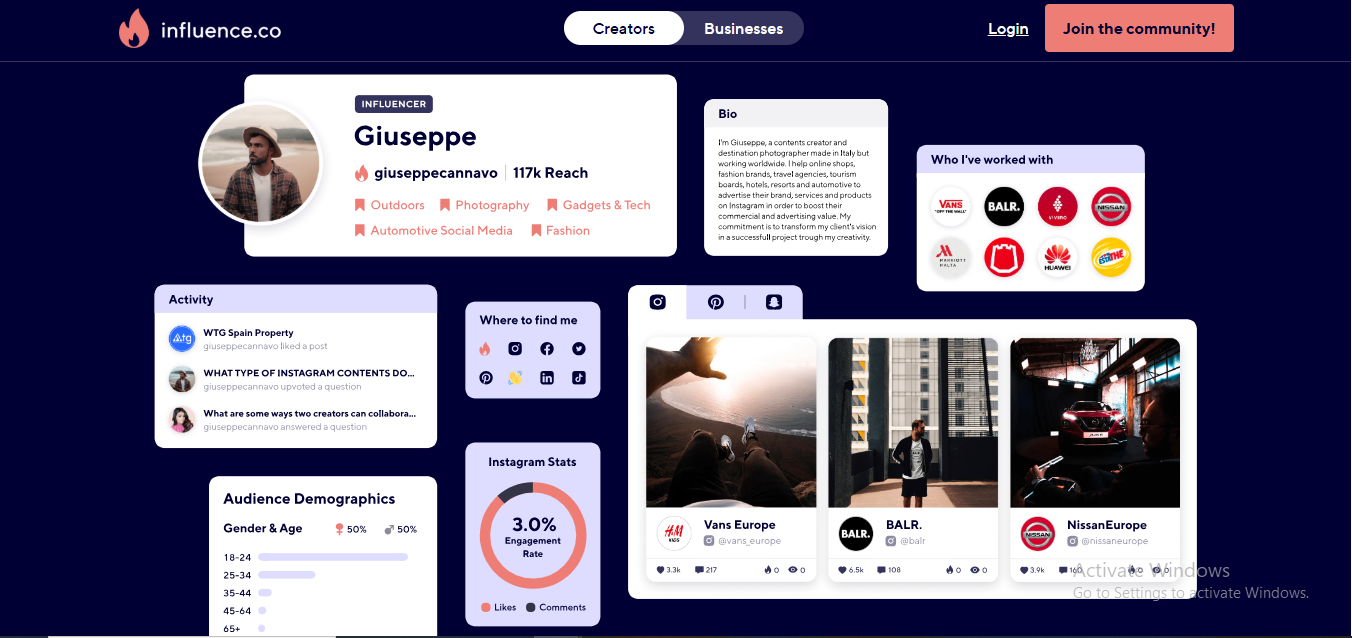
What I Loved:
-
Community Building: A strong focus on fostering a community among creators and brands.
-
Professional Profiles: Creators can showcase their work, making it easier for brands to find the right fit.
-
Educational Resources: Offers tools and resources to help creators grow and monetize their influence.
What I Didn’t Love:
-
Limited Campaign Tools: More robust campaign management features would be beneficial.
-
Search Functionality: Improved search filters could enhance the user experience.
Pricing: Influence.co offers a free basic plan, with premium features available at additional costs.
Influencer.com
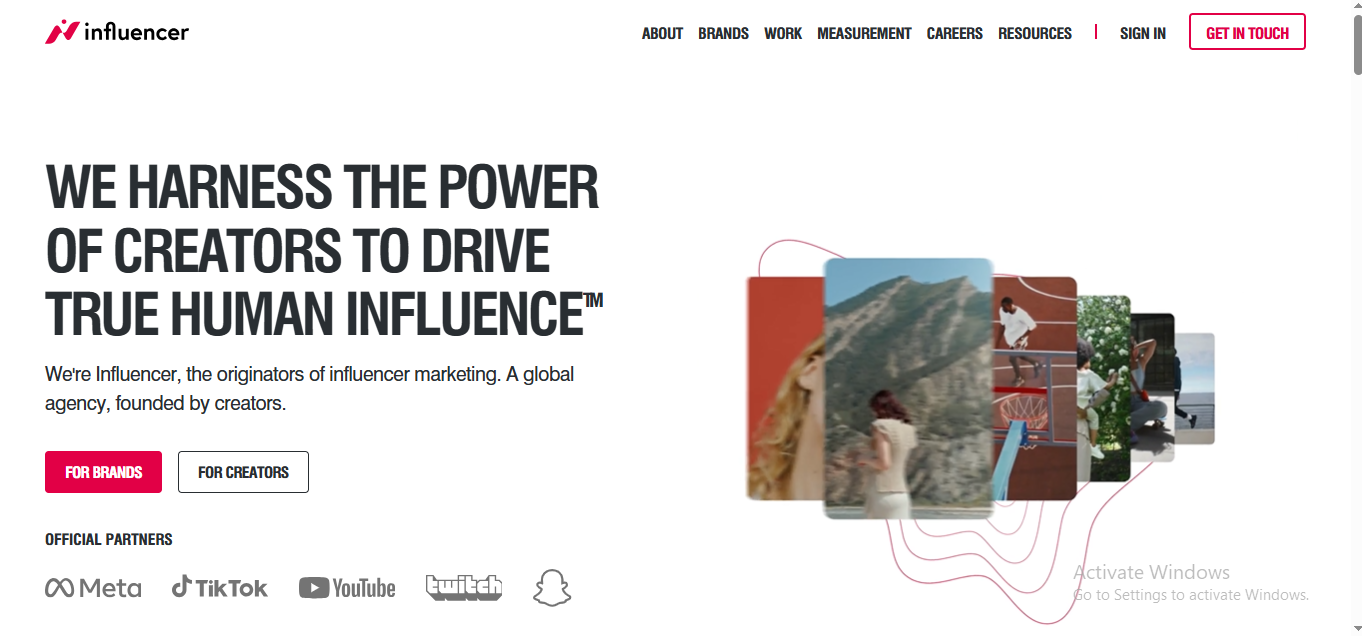
What I Loved:
-
Global Reach: Access to a vast network of influencers worldwide.
-
Data-Driven Insights: Comprehensive analytics help in measuring campaign success.
-
Creative Strategy: Offers support in developing creative strategies tailored to brand goals.
What I Didn’t Love:
-
Pricing Transparency: Clearer information on pricing structures would be helpful.
-
Platform Navigation: The interface could be more intuitive for new users.
Pricing: Influencer.com provides customized pricing based on campaign requirements and scale.
Later

What I Loved:
-
User-Friendly Interface: Later’s platform is intuitive, making campaign setup a breeze.
-
Comprehensive Tools: Offers a suite of tools for influencer discovery, campaign management, and analytics.
-
Integration Capabilities: Seamlessly integrates with major social media platforms, enhancing workflow efficiency.
What I Didn’t Love:
-
Pricing Transparency: More upfront information on pricing tiers would be helpful.
-
Limited Advanced Features: While great for basic campaigns, it may lack some advanced functionalities for larger enterprises.
Pricing: Later offers various pricing plans, catering to different business sizes and needs.
Shout Agency
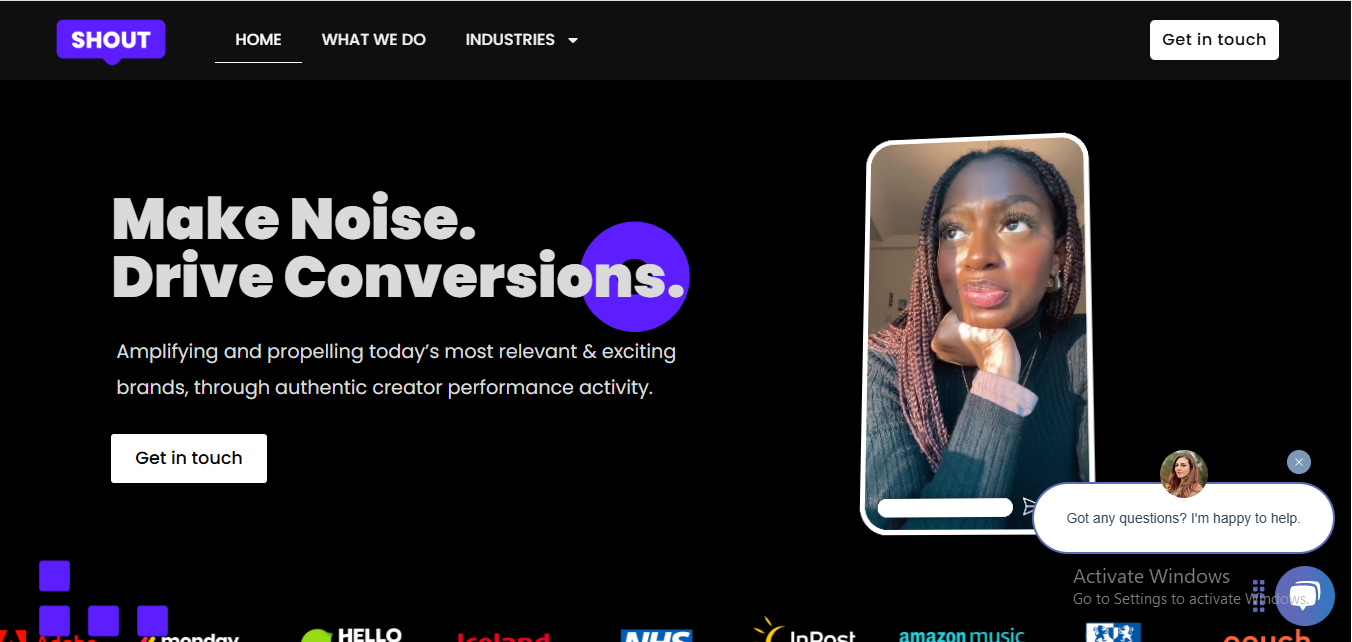
What I Loved:
-
Creative Campaigns: Known for crafting innovative influencer campaigns that resonate with audiences.
-
Personalized Approach: Offers tailored strategies to align with brand objectives.
-
Strong Network: Boasts a diverse roster of influencers across multiple niches.
What I Didn’t Love:
-
Limited Platform Access: Primarily operates as an agency, so lacks a self-service platform for brands.
-
Scalability Concerns: May not be ideal for brands looking to manage large-scale campaigns independently.
Pricing: Customized based on campaign scope and brand requirements.
Klear
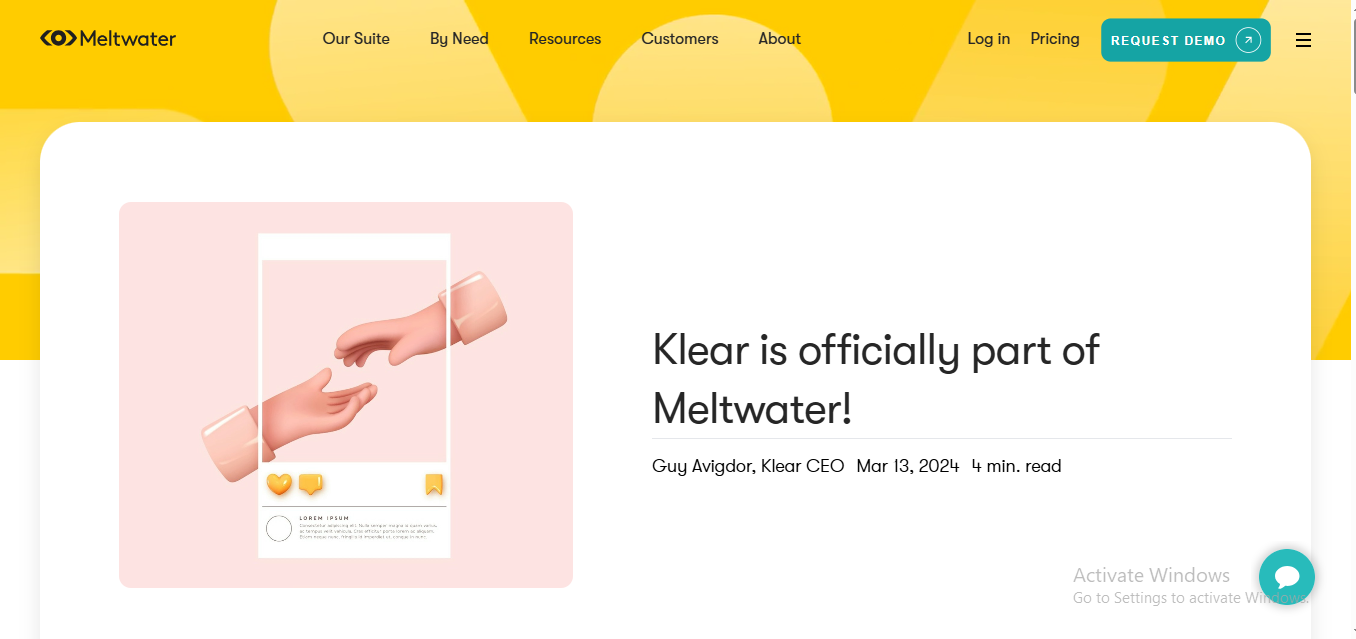
What I Loved:
-
Robust Analytics: Provides in-depth insights into influencer performance and audience demographics.
-
Comprehensive Database: Access to a vast network of influencers across various platforms.
-
Campaign Tracking: Efficient tools for monitoring campaign progress and ROI.
What I Didn’t Love:
-
Complex Interface: The platform can be overwhelming for newcomers due to its extensive features.
-
Pricing: May be on the higher side, which might not be ideal for smaller businesses.
Pricing: Klear offers customized pricing based on business needs and scale.
Brandbassador

What I Loved:
-
Ambassador Focus: Specializes in turning customers into brand ambassadors, fostering genuine advocacy.
-
Gamified Engagement: Incorporates challenges and rewards to motivate ambassadors.
-
Seamless Integration: Easily integrates with e-commerce platforms for tracking and analytics.
What I Didn’t Love:
-
Learning Curve: New users might need time to familiarize themselves with all features.
-
Limited Influencer Discovery: Focuses more on existing customers than discovering new influencers.
Pricing: Brandbassador offers various pricing plans, catering to different business sizes and needs.
Shout UGC
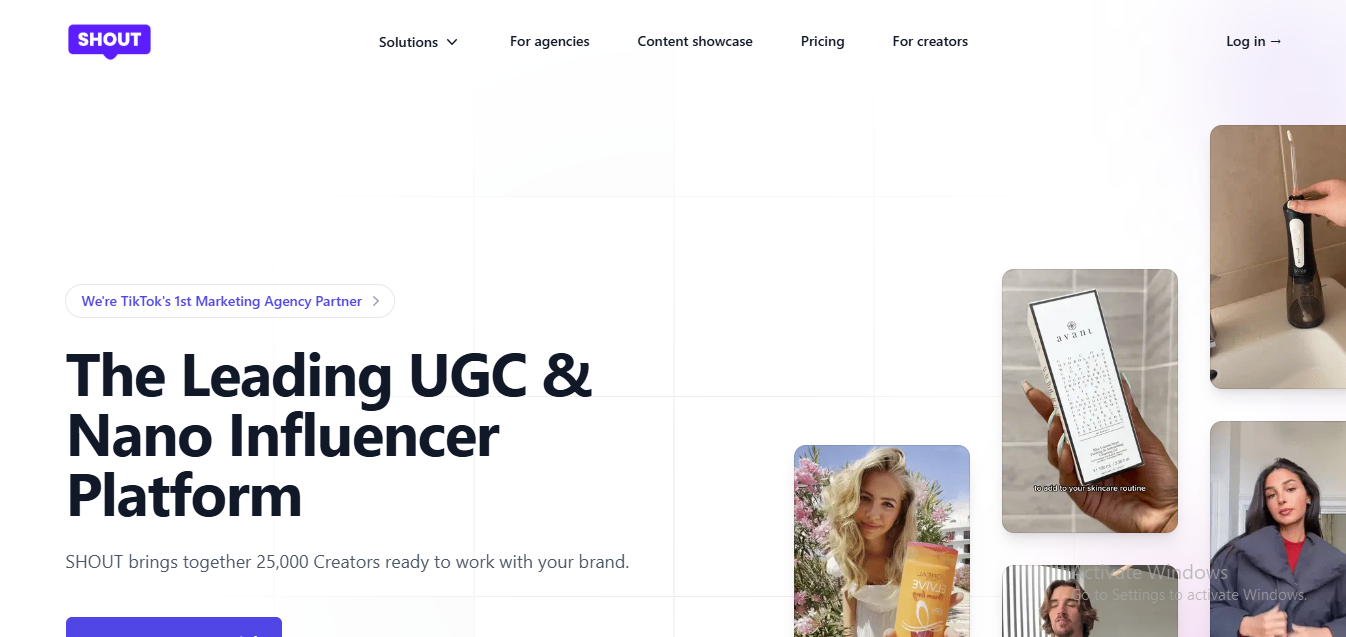
What I Loved:
-
UGC Emphasis: Prioritizes authentic user-generated content, enhancing brand credibility.
-
Nano-Influencer Network: Access to a vast pool of nano-influencers, ideal for niche targeting.
-
Cost-Effective: Offers affordable content creation options, making it accessible for smaller brands.
What I Didn’t Love:
-
Limited Advanced Features: May lack some advanced functionalities for larger enterprises.
-
Platform Navigation: The interface could be more intuitive for new users.
Pricing: Shout UGC provides flexible pricing, starting at £45 per video, catering to various budget levels.
CreatorIQ
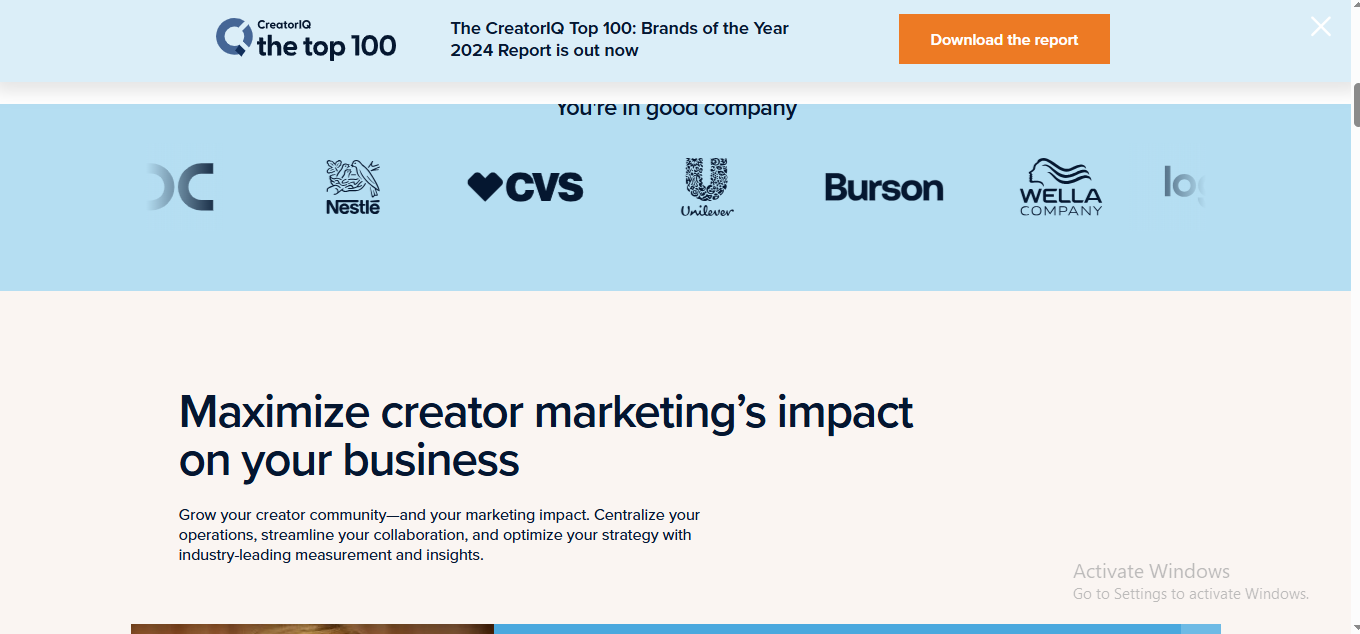
What I Loved:
-
Enterprise-Grade Tools: Offers advanced features suitable for large-scale campaigns.
-
Data-Driven Insights: Provides comprehensive analytics to measure campaign success.
-
Global Reach: Access to a vast network of influencers worldwide.
What I Didn’t Love:
-
Complex Setup: The platform can be overwhelming for newcomers due to its extensive features.
-
Pricing: May be on the higher side, which might not be ideal for smaller businesses.
Pricing: CreatorIQ offers customized pricing based on business needs and scale.
Traackr

What I Loved:
-
Comprehensive Features: Traackr offers a robust suite of tools for influencer discovery, campaign management, and performance analytics.
-
Data-Driven Insights: The platform provides in-depth analytics, helping brands make informed decisions.
-
Global Reach: Access to a vast network of influencers worldwide.
What I Didn’t Love:
-
Complex Setup: The platform can be overwhelming for newcomers due to its extensive features.
-
Pricing: May be on the higher side, which might not be ideal for smaller businesses.
Pricing: Traackr offers customized pricing based on business needs and scale.
Upfluence
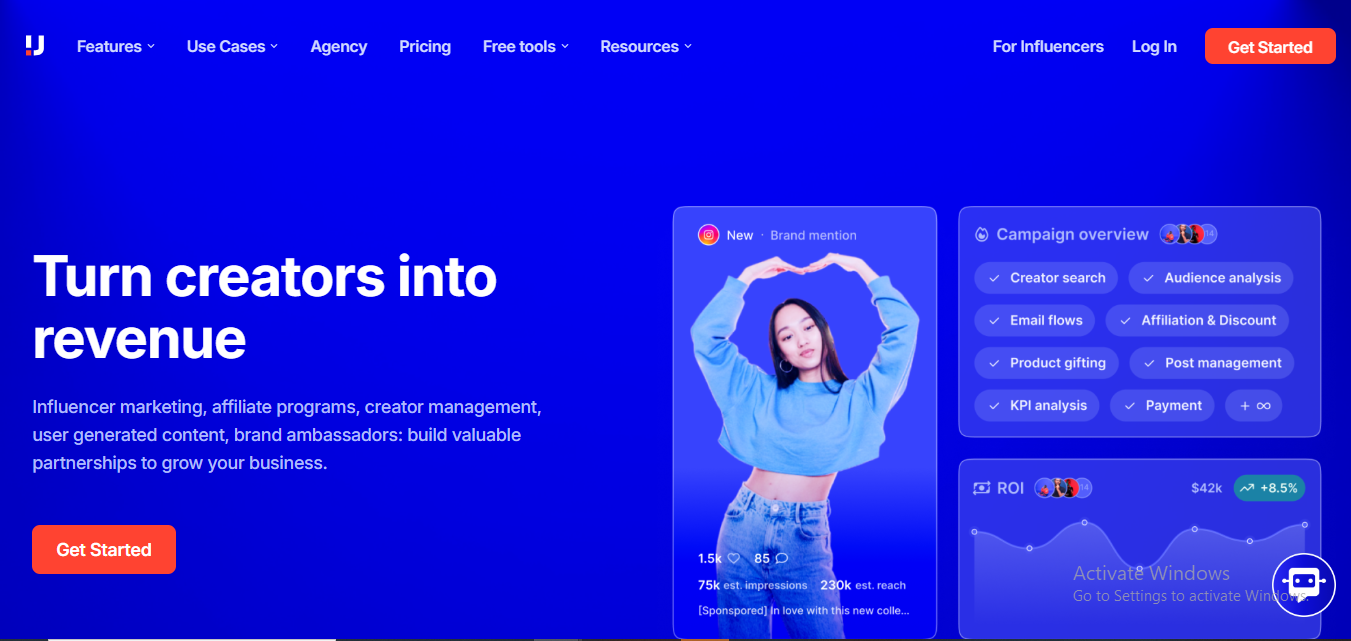
What I Loved:
-
All-in-One Solution: Upfluence provides tools for influencer discovery, campaign management, and performance tracking.
-
E-commerce Integration: Seamlessly integrates with platforms like Shopify and WooCommerce.
-
Affiliate Program Management: Offers features to manage and track affiliate programs effectively.
What I Didn’t Love:
-
Learning Curve: New users might need time to familiarize themselves with all features.
-
Pricing Transparency: More upfront information on pricing tiers would be helpful.
Pricing: Upfluence provides customized pricing based on business needs and scale.
Meltwater

What I Loved:
-
Comprehensive Analytics: Meltwater offers in-depth insights into media, social, and consumer trends.
-
AI-Powered Tools: Utilizes AI to turn data into actionable insights.
-
Global Presence: Trusted by major brands worldwide.
What I Didn’t Love:
-
Complex Interface: The platform can be overwhelming for newcomers due to its extensive features.
-
Pricing: May be on the higher side, which might not be ideal for smaller businesses.
Pricing: Meltwater offers customized pricing based on business needs and scale.
The Social Cat

What I Loved:
-
Micro-Influencer Focus: Specializes in connecting brands with micro-influencers, fostering genuine engagement.
-
User-Friendly Interface: The platform is intuitive, making campaign setup a breeze.
-
Cost-Effective: Offers affordable content creation options, making it accessible for smaller brands.
What I Didn’t Love:
-
Limited Advanced Features: May lack some advanced functionalities for larger enterprises.
-
Platform Navigation: The interface could be more intuitive for new users.
Pricing: The Social Cat provides flexible pricing, catering to various budget levels.
InfluencerMarketing.ai
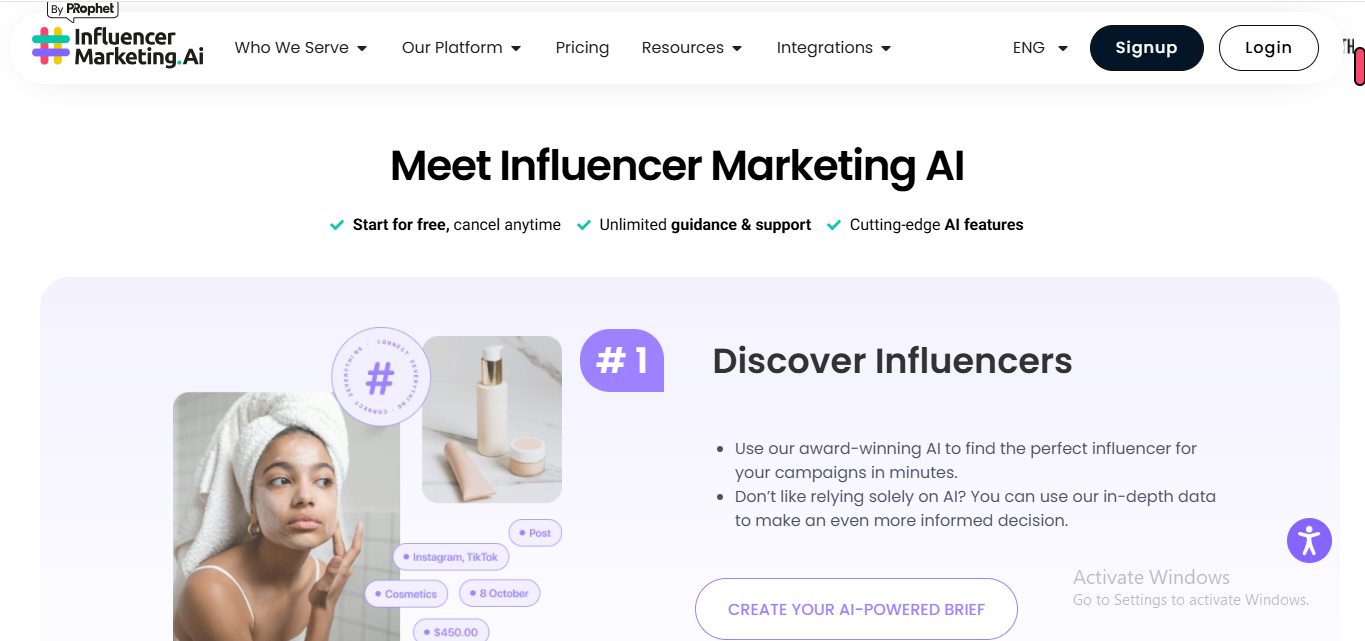
What I Loved:
-
AI-Powered Insights: Utilizes AI to provide data-driven influencer recommendations.
-
Comprehensive Tools: Offers a suite of tools for influencer discovery, campaign management, and analytics.
-
User-Friendly Interface: The platform is intuitive, making campaign setup a breeze.
What I Didn’t Love:
-
Limited Information: More detailed information on features and pricing would be helpful.
-
Integration Capabilities: Expanding integrations with other platforms would enhance usability.
Pricing: InfluencerMarketing.ai offers various pricing plans, catering to different business sizes and needs.
Wrapping It Up
So there you have it—29 best Traackr alternatives for 2025! Each platform comes with its own set of strengths and weaknesses, so it really depends on what you’re looking for. If you’re a small brand with a tight budget, platforms like Lolly and The Influencer Room are your go-to. On the other hand, if you’re a big player in the game and need advanced tools and features, Mavrck and Grin are the way to go.
- Best Lusha Alternatives for 2025 - April 22, 2025
- Best Overloop Alternatives for 2025 - April 22, 2025
- Best 6sense Alternatives for 2025 - April 22, 2025


